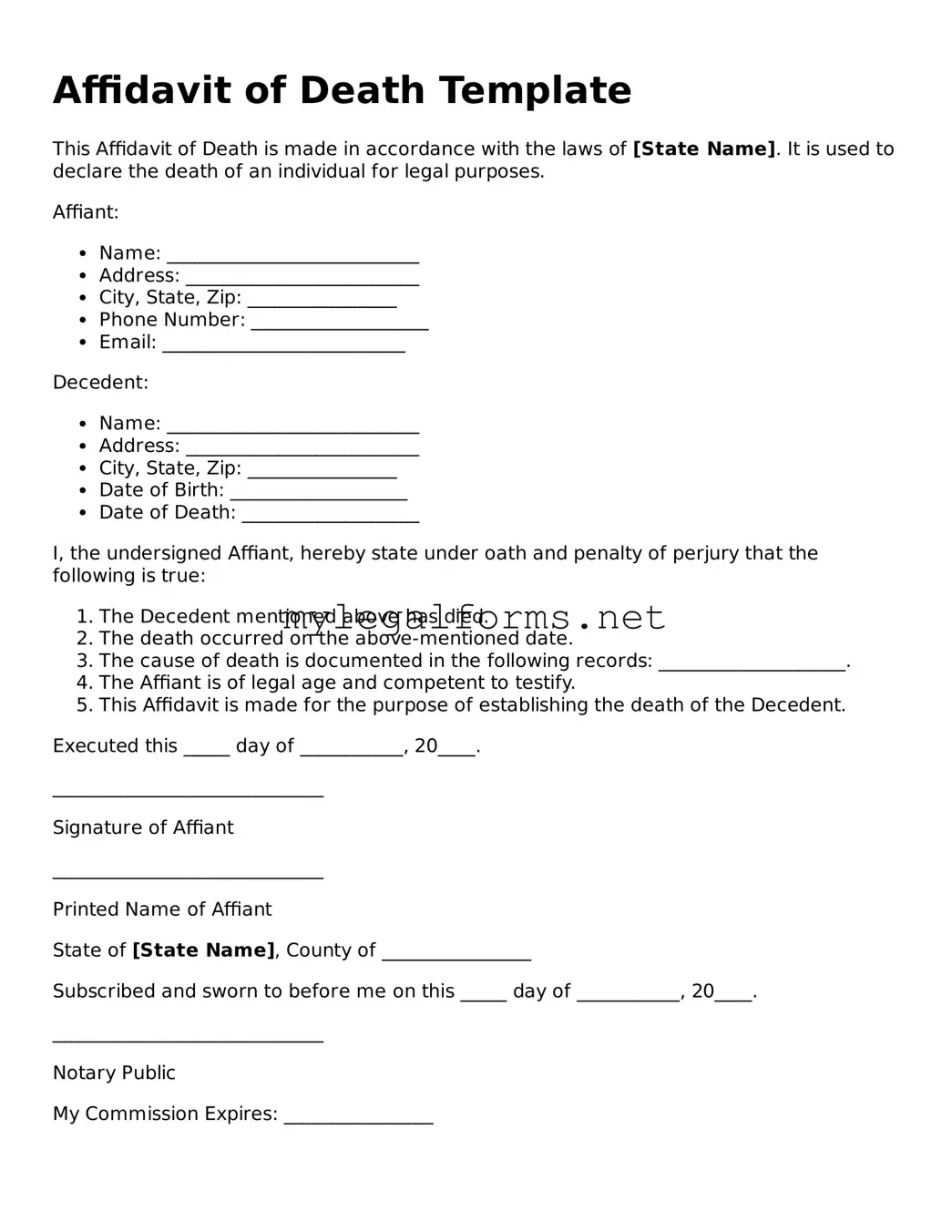Affidavit of Death Template
This Affidavit of Death is made in accordance with the laws of [State Name]. It is used to declare the death of an individual for legal purposes.
Affiant:
- Name: ___________________________
- Address: _________________________
- City, State, Zip: ________________
- Phone Number: ___________________
- Email: __________________________
Decedent:
- Name: ___________________________
- Address: _________________________
- City, State, Zip: ________________
- Date of Birth: ___________________
- Date of Death: ___________________
I, the undersigned Affiant, hereby state under oath and penalty of perjury that the following is true:
- The Decedent mentioned above has died.
- The death occurred on the above-mentioned date.
- The cause of death is documented in the following records: ____________________.
- The Affiant is of legal age and competent to testify.
- This Affidavit is made for the purpose of establishing the death of the Decedent.
Executed this _____ day of ___________, 20____.
_____________________________
Signature of Affiant
_____________________________
Printed Name of Affiant
State of [State Name], County of ________________
Subscribed and sworn to before me on this _____ day of ___________, 20____.
_____________________________
Notary Public
My Commission Expires: ________________
